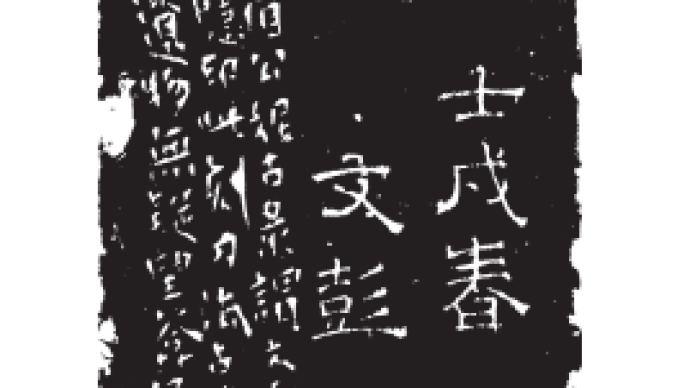
In the history of Chinese seal carving, Wen Peng was revered by later generations as the pioneer of the Ming and Qing seal carving schools. In keeping with the trend of the times, he adopted stone engraving, so that pyrophyllite was widely accepted and used by literati and seal carvers, and then changed the creative mode of "seal" and "engraving" division of labor between literati and printers, triggering the self-engraving of seals by literati. group phenomenon, and continues to this day.
In the history of Chinese seal carving, if one were to be promoted publicly, and only one seal carver could be selected as the representative, Wen Peng, who was revered by later generations as the pioneer of the seal carving genre in the Ming and Qing dynasties, would have been elected with a high vote. In keeping with the trend of the times, he adopted stone engraving and printing, which promoted the process of officially incorporating pyrophyllite into printing materials, and made pyrophyllite widely accepted and used by literati seal engravers, thus changing the division of labor between literati and printers. The creative mode has triggered the group phenomenon of self-engraving of seal seals by Indians, and it has continued to this day. His style of printing is clear and steady, dignified and quaint, and he is well-liked by the world. Zhou Lianggong of the Qing Dynasty said in the "Biography of Yin Ren Shuwen Guo Bo Yin": "But one of the ways of printing was opened in the country, and later generations regarded it as the golden rule, and the clouds are all over the world. I also know that there is no word for praise."
Wen Peng, the eldest son of Wen Zhengming. Born in 1498, died in 1573. The word Shoucheng, the No. Sanqiao, was born in Wuxian, Jiangsu, and was famous for seal carving. Official to Dr. Liangjing Guozijian. In the late Ming Dynasty, the sealist and seal theorist Zhu Jian used the number as the school in the "Yinjing", and called Wen Peng and the sealers who followed his style the "Three Bridge School": "Nei Ruoquan Yuanyu, Chen Juyi" , Li Changheng (Liufang), Xu Zhonghe, Gui Wenxiu (Changshi) and other famous scholars from the Three Wu Schools, the Three Bridge School." Others also took the land as the school and called it the "Wumen School".
As a pioneering figure, Wen Peng left behind many stories. The story of Wen Peng's purchase of four baskets of stone during his tenure in Nanjing's Guozijian in Zhou Lianggong's "Indian Biography" is widely circulated. One day, Wen Peng crossed the Xihong Bridge in a soft sedan chair and saw an old man arguing with others. It turned out that someone wanted to buy the four baskets of stone from the old man. The old man said that "the stone came from the river", and he had to pay "Jianwei and the loser" some transportation fees, but the other party refused. In order to quell the trouble, Wen Peng said: "Don't argue, I am with Er, and I will make more money." The "Second Generation Wen" bought four baskets of stones and went home. "The solution is the so-called light today, and the next one is also called Laokeng." Lighting and Laokeng are both famous products in Qingtian stone. The stone is warm and delicate. At that time, ordinary people mostly used it as "flowers, leaves and insects, for women. Ornaments" , and occasionally used to engrave seals. In Liu Ji's "Feixuelu" at the end of the Ming Dynasty, it was said that the introduction of stone into the printing material started from Wang Mian: "The person who engraved the stone with the flower milk started from Shannong (Wang Mian)." It is also described in Mi Fu's "Inkstone History", which is a kind of metamorphic rock. Qingtian stone is more susceptible to knife than flower milk stone, and it is more controllable when engraving. In addition, the good stone is as rich and rich as jade, and has richer and brighter colors than jade, which is loved by scholars and the public. At the end of the Ming Dynasty, Tu Long said in "Remaining Events of Kao Pian": "Among the Qingtian stones, there are bright and clean like jade, and the light is bright like a lamp, so it is called a light stone. Today's dance is more expensive, and its price is heavier than jade, and its quality is elegant. It’s easy to engrave, but the brush strokes can be done.” It can be speculated that Wen Peng was tempted to buy stones not only to settle disputes, but also to be attracted by the stones themselves. It is also conceivable that Wen Peng is no stranger to the properties of Qingtian stone as a printing material. In the early years, Wen Peng used teeth as the quality of seals. After the ink was dropped, he asked the craftsman Li Wenfu to carve it . It is said that the tooth seal of "The Depths of the Seventy-two Peaks" discovered during the Anti-Japanese War in the 20th century and the stone seal of "The Qin Strikes the Song and Plays with the Crane" now in the Xiling Seal Society, both seals are Zhu Wenxian seals with similar styles. The method is rigorous, the cloth is even and white, the line quality is fine and strong, and the bottom of the printing is flat, which is exquisite, graceful and dignified. Although it is a stone seal, "The qin strikes the pine and plays with the crane", but from the point of view of the printing method, this seal is probably also made in cooperation with the printer.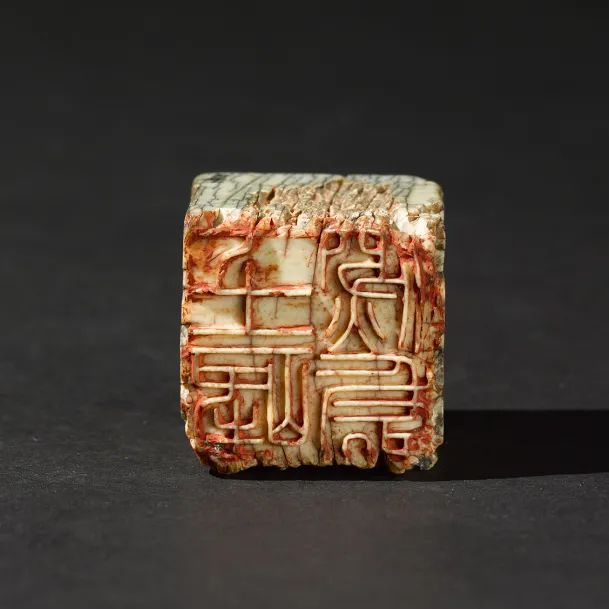
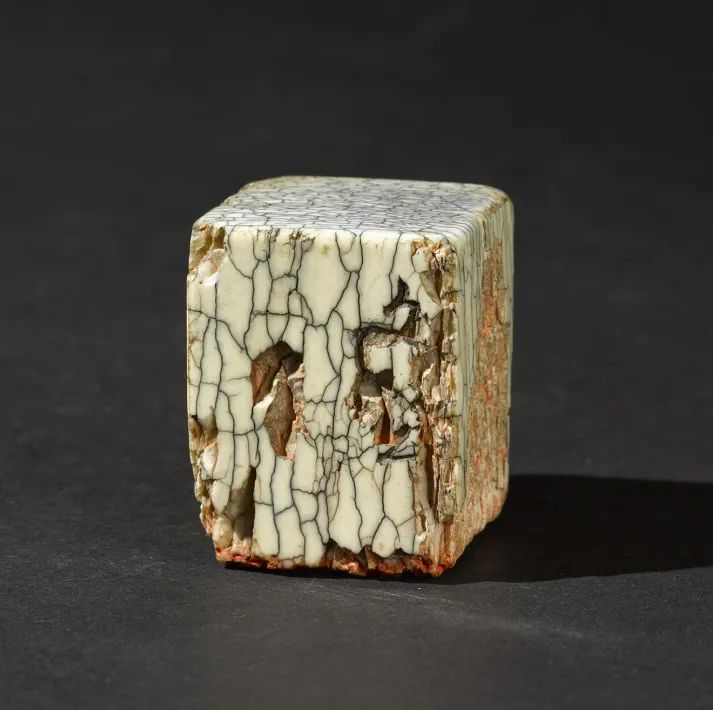
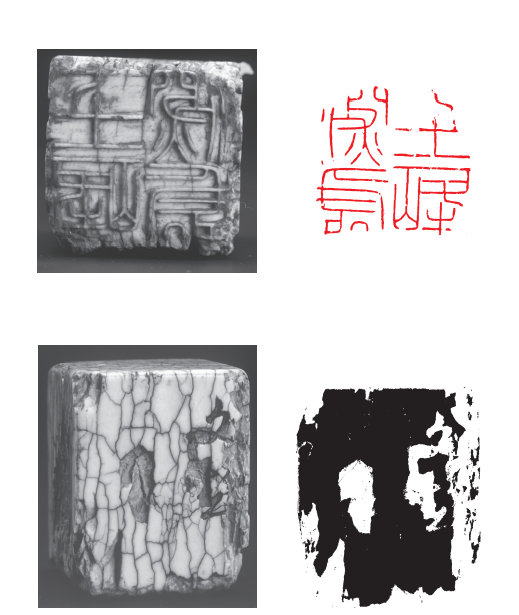
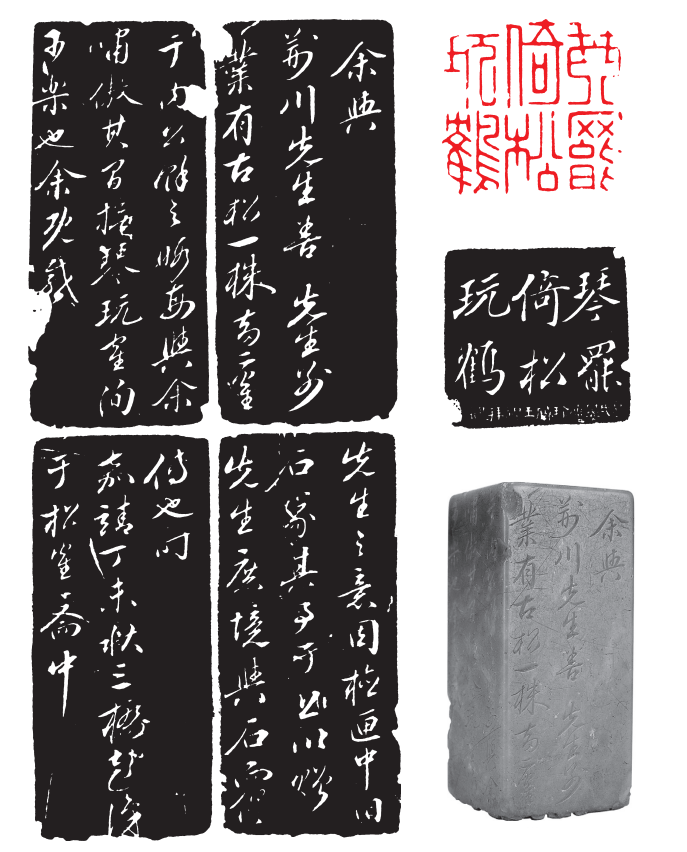
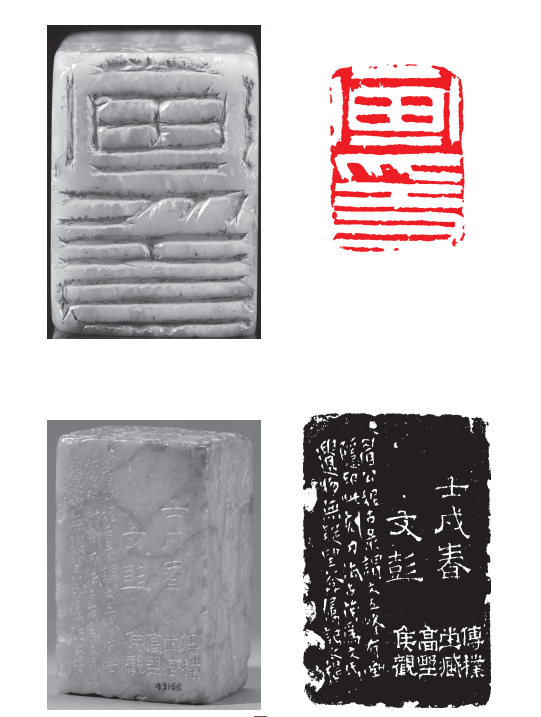
Liang Qianqiu's comment is engraved on the side of the seal, as the other side of the double-sided print - the inscription of Zhu Wenyin "Dongshan Thatched Cottage" engraved by Liang Qianqiu. Liang Jia, the word Qianqiu. He Zhen's disciples, what he did and He's both in shape and spirit, could almost be real. There are self-propelled people who come out of the machine, which are quite famous and have a certain influence on later generations. This printing knife method is skillful and refined, the text is fair and accessible, and it is graceful and lovely. Looking at the knife marks on the surface of the seal, it is no longer like Wen Peng's "The qin strikes the pine and plays with the crane". This is also the difference between Indian self-transportation and craftsman engraving. Liang Qianqiu also stated on the side note that it was the seal "Hu Ke was restored to Jia Sizhong in Jiangyin" , and also mentioned the reason and mood of engraving this seal: "I was ordered to make 'Dongshan Thatched Cottage' on one side, and I was ashamed of my wrist. It’s not as good as Shoucheng, but it’s juxtaposed with it, and it’s not a lot of worry? However, it has been forty years since I wanted to play the game, and it’s strange that I have followed the footsteps of learning. A chronicle of things." Bingshen was the twenty-fourth year of the Wanli reign of the Ming Dynasty (1596), which was thirty-four years apart from the one published by Wen Peng in Renxu (1562).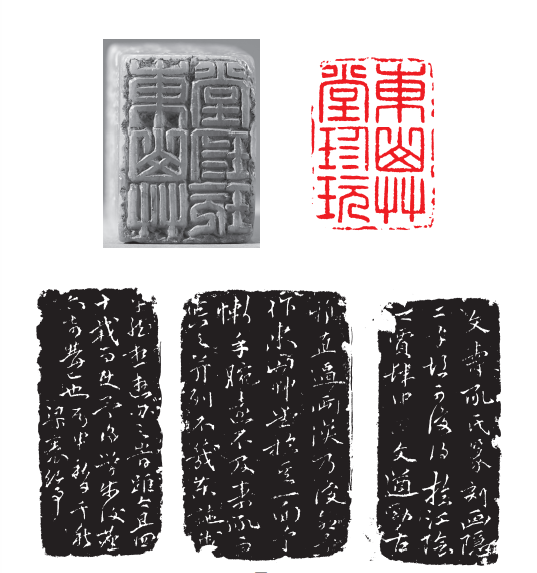
There are not many physical copies of Wen Peng Bai's seals, and some Xueshantang seals are scattered in the hands of private collectors. In the "Chengqing Pavilion Seal Book" (both edition), there are nineteen seals under Wen Peng's name: "One Drunk for a Month Young Prince", "On the Heart Ranger Field", "Tan Xin Xuan", "Self-proclaimed minister is an immortal in wine", "Jie" "Fashou Longevity", "The Boss Who Can Read More", "Heavenly Foreign Guests", "Singing with Wine and Singing the Moon", "Fulfilling the Beauty of Pangu", "Lying Unrestrained and Stubborn", "Loving Wine Is Deserving of Heaven", "Looking for books without understanding the piano and chatting for self-entertainment" "The emperor said Dabuyi", "Holding a cup of music and calling the saint to avoid the virtuous", "Talking about the past", "The emperor has no old eyes", "Where to put the old man", "No talent and dare not get tired of Mingshi", "Read all the friendships and close the door" . All the seals are marked as "stone seals", and the style is similar. Compared with the true Han character of "painting hidden", the seals compiled in "Chengqing Museum Seals" seem to be slightly rigid, and it may also be Wen Peng's seal draft. Work engraved.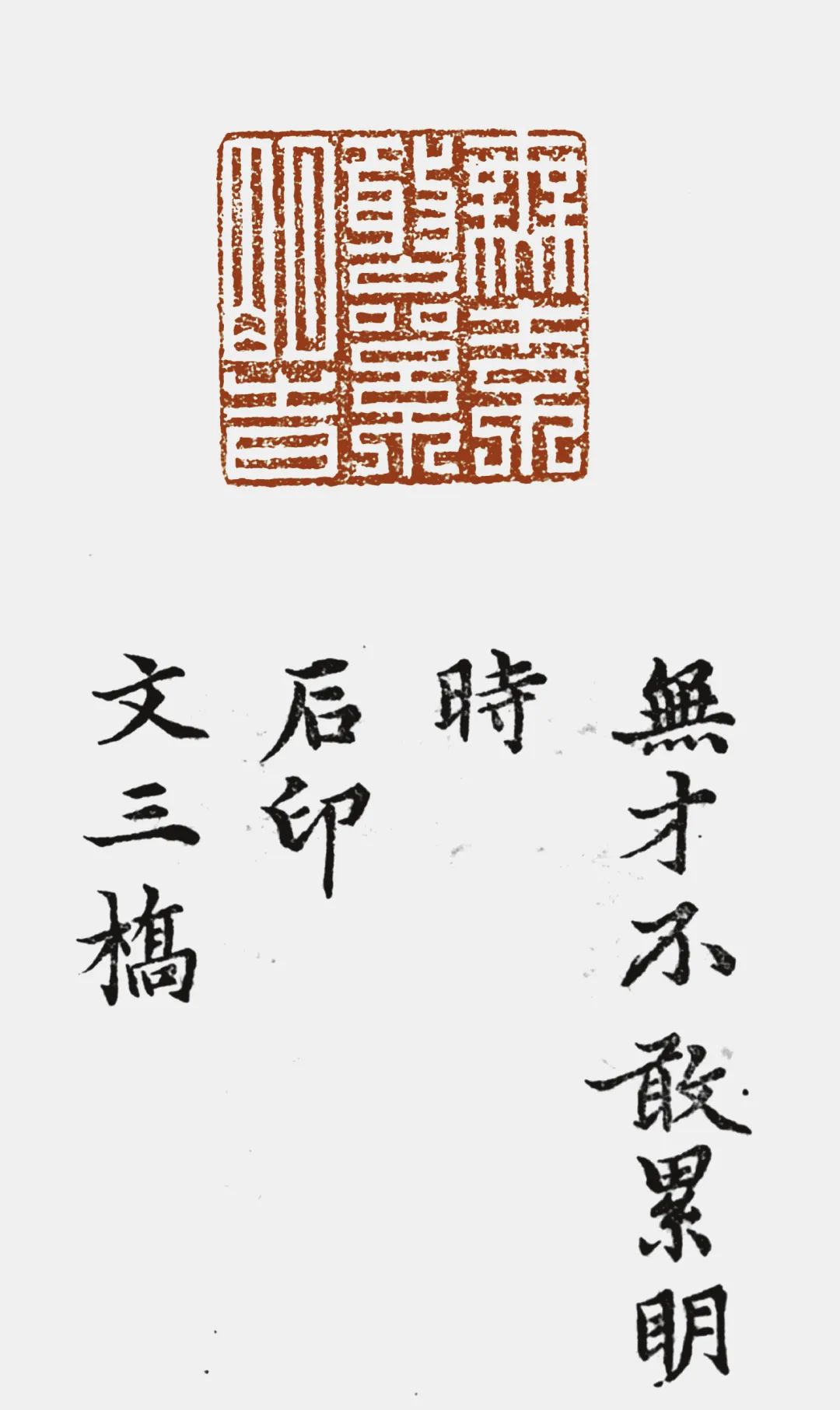
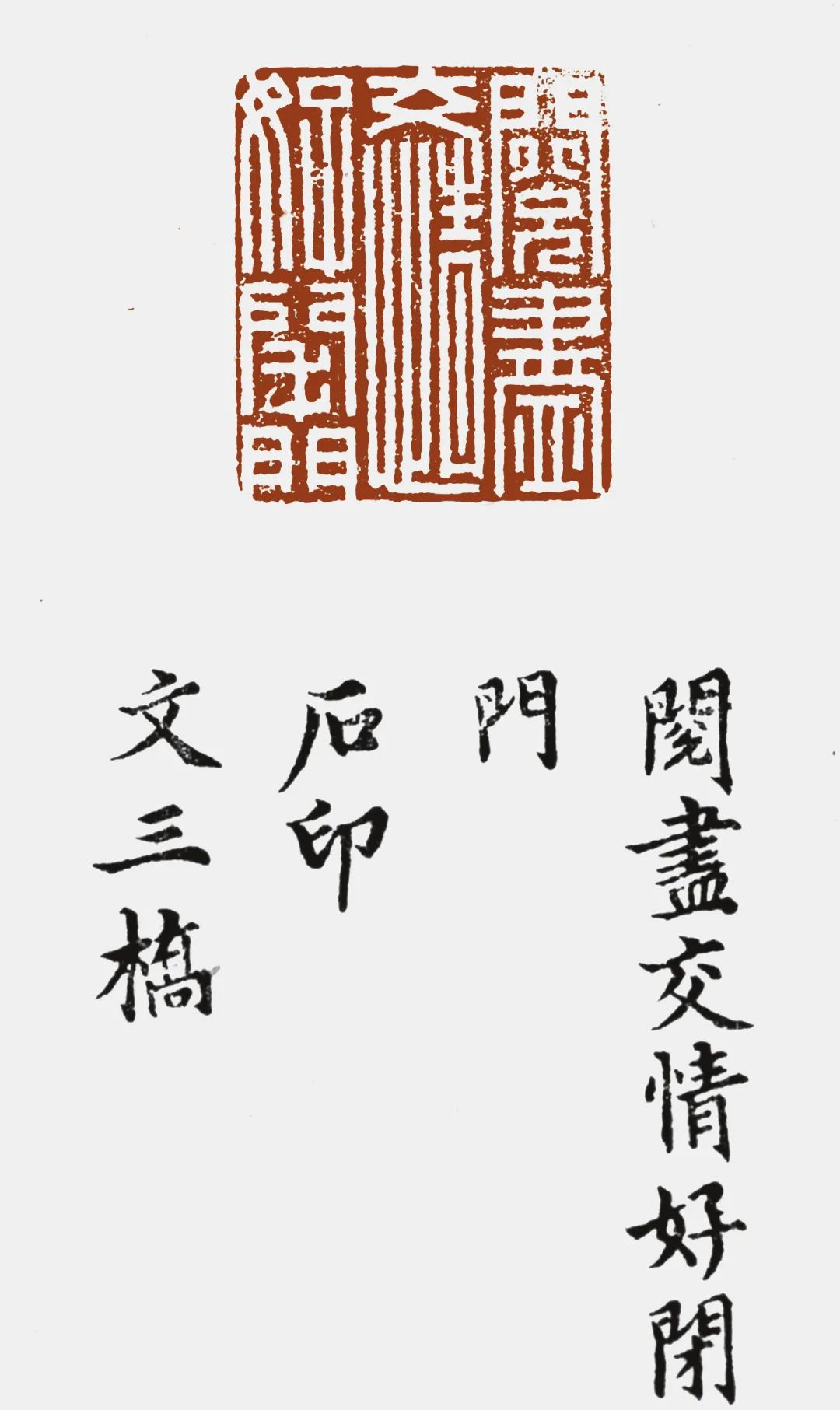

Li Liufang, who was roughly the same era as Dong Qichang and was listed as the "Three Bridges School" by Zhu Jian, said in "Preface to the Seal of Baoyinzhai": "Yu Juvenile played this way, and my friend Wenxiu competed to imitate each other, and they were often opposite. After drinking and tea, the sound of swords and brushes pierced endlessly, or shouted triumphantly, and aimed at each other, which is unprecedented." This hearty creative state has brought him spiritual pleasure, which cannot be achieved by division of labor and cooperation. Shen Ye, a literati in the Ming Dynasty, also expressed his cheerful mood when engraving with a stone seal: "Or: the lights and fish are frozen solid, and gold, jade, silver and copper are more lovely, so now I'll only engrave the stone, and leave everything else alone, why? Yu said: Gold and jade are difficult to be formed with a lot of force, while stones require less force and are easy to achieve. If it is difficult to achieve, the seal has not been completed and the vigor has been exhausted; if it is easy to achieve, the seal has been completed and the vigor is endless. I also talked about it. How can you really be a printer?" In the eyes of literati, engraving with stone is only a kind of expedition, but it has the natural advantages of "less force and easy" and "imprint has been completed and endless prosperity", so even if Shen Ye I think that "gold, jade, silver and bronze are more self-loving" , or "leave everything else alone" and engrave the stone alone. The charm of pyrophyllite can be seen!
The history of literati who had to use fake hands to make seals ended. The history of seal carving opened the prelude to the era of stone seals, and it also paved the way for Chinese seals to become purely artistic. As a typical case in the history of literati seal carving, Wen Peng's seal carving creation has historically completed a magnificent turn.
(This article was originally published in the third issue of "Calligraphy" magazine in 2022, with the original title "Wen Peng's "Painting Hidden" | The Gorgeous Turn of Chinese Seals, published by The Paper with authorization)
In the history of Chinese seal carving, if one were to be promoted publicly, and only one seal carver could be selected as the representative, Wen Peng, who was revered by later generations as the pioneer of the seal carving genre in the Ming and Qing dynasties, would have been elected with a high vote. In keeping with the trend of the times, he adopted stone engraving and printing, which promoted the process of officially incorporating pyrophyllite into printing materials, and made pyrophyllite widely accepted and used by literati seal engravers, thus changing the division of labor between literati and printers. The creative mode has triggered the group phenomenon of self-engraving of seal seals by Indians, and it has continued to this day. His style of printing is clear and steady, dignified and quaint, and he is well-liked by the world. Zhou Lianggong of the Qing Dynasty said in the "Biography of Yin Ren Shuwen Guo Bo Yin": "But one of the ways of printing was opened in the country, and later generations regarded it as the golden rule, and the clouds are all over the world. I also know that there is no word for praise."
Wen Peng, the eldest son of Wen Zhengming. Born in 1498, died in 1573. The word Shoucheng, the No. Sanqiao, was born in Wuxian, Jiangsu, and was famous for seal carving. Official to Dr. Liangjing Guozijian. In the late Ming Dynasty, the sealist and seal theorist Zhu Jian used the number as the school in the "Yinjing", and called Wen Peng and the sealers who followed his style the "Three Bridge School": "Nei Ruoquan Yuanyu, Chen Juyi" , Li Changheng (Liufang), Xu Zhonghe, Gui Wenxiu (Changshi) and other famous scholars from the Three Wu Schools, the Three Bridge School." Others also took the land as the school and called it the "Wumen School".
As a pioneering figure, Wen Peng left behind many stories. The story of Wen Peng's purchase of four baskets of stone during his tenure in Nanjing's Guozijian in Zhou Lianggong's "Indian Biography" is widely circulated. One day, Wen Peng crossed the Xihong Bridge in a soft sedan chair and saw an old man arguing with others. It turned out that someone wanted to buy the four baskets of stone from the old man. The old man said that "the stone came from the river", and he had to pay "Jianwei and the loser" some transportation fees, but the other party refused. In order to quell the trouble, Wen Peng said: "Don't argue, I am with Er, and I will make more money." The "Second Generation Wen" bought four baskets of stones and went home. "The solution is the so-called light today, and the next one is also called Laokeng." Lighting and Laokeng are both famous products in Qingtian stone. The stone is warm and delicate. At that time, ordinary people mostly used it as "flowers, leaves and insects, for women. Ornaments" , and occasionally used to engrave seals. In Liu Ji's "Feixuelu" at the end of the Ming Dynasty, it was said that the introduction of stone into the printing material started from Wang Mian: "The person who engraved the stone with the flower milk started from Shannong (Wang Mian)." It is also described in Mi Fu's "Inkstone History", which is a kind of metamorphic rock. Qingtian stone is more susceptible to knife than flower milk stone, and it is more controllable when engraving. In addition, the good stone is as rich and rich as jade, and has richer and brighter colors than jade, which is loved by scholars and the public. At the end of the Ming Dynasty, Tu Long said in "Remaining Events of Kao Pian": "Among the Qingtian stones, there are bright and clean like jade, and the light is bright like a lamp, so it is called a light stone. Today's dance is more expensive, and its price is heavier than jade, and its quality is elegant. It’s easy to engrave, but the brush strokes can be done.” It can be speculated that Wen Peng was tempted to buy stones not only to settle disputes, but also to be attracted by the stones themselves. It is also conceivable that Wen Peng is no stranger to the properties of Qingtian stone as a printing material. In the early years, Wen Peng used teeth as the quality of seals. After the ink was dropped, he asked the craftsman Li Wenfu to carve it . It is said that the tooth seal of "The Depths of the Seventy-two Peaks" discovered during the Anti-Japanese War in the 20th century and the stone seal of "The Qin Strikes the Song and Plays with the Crane" now in the Xiling Seal Society, both seals are Zhu Wenxian seals with similar styles. The method is rigorous, the cloth is even and white, the line quality is fine and strong, and the bottom of the printing is flat, which is exquisite, graceful and dignified. Although it is a stone seal, "The qin strikes the pine and plays with the crane", but from the point of view of the printing method, this seal is probably also made in cooperation with the printer.

Wen Peng "The Depths of the Seventy-two Peaks" Ya Zhangming 1368-1644

Wen Peng "The Depths of the Seventy-two Peaks" Ya Zhangming 1368-1644

"The Depths of the Seventy-two Peaks" Tooth Seal

"Playing with a Crane, Leaning on the Pine" Stone Badge
There is a white seal, which can be regarded as the work of Wen Peng's self-engraving. This seal is housed in the Shanghai Museum. It measures 3.3 centimeters in length and 2.3 centimeters in width. It is made of Qingtian stone. The seal text is interpreted as "painting hidden", the two characters are arranged up and down, and the official script is used as the seal. There are sharp punching knives in the strokes, and there are also finely chopped knives.
draw hidden
Liang Qianqiu, a seal engraver in the late Ming Dynasty, commented on this seal as "the sword is strong in writing, and its quaintness is close to the Han Dynasty", and Wang Fuchang commented that "the sword is ancient and prosperous at this moment, and it is undoubtedly a relic of Wen's family" . Zhou Yingyuan's "Seal of Sealing" said that Wen Peng "is in seal printing. It is popular or hand-engraved, but there are many white texts." Wen Peng's inscription "Ren Xuchun", which is the 41st year of Jiajing in the Ming Dynasty (1562), was 65 years old. Wang Fuchang mentioned that Chen Jiru's "Nigulu" once recorded Shiyin. Chen Jiru was born in 1558, only a Jiazi younger than Wen Peng, and his record should be credible.Liang Qianqiu's comment is engraved on the side of the seal, as the other side of the double-sided print - the inscription of Zhu Wenyin "Dongshan Thatched Cottage" engraved by Liang Qianqiu. Liang Jia, the word Qianqiu. He Zhen's disciples, what he did and He's both in shape and spirit, could almost be real. There are self-propelled people who come out of the machine, which are quite famous and have a certain influence on later generations. This printing knife method is skillful and refined, the text is fair and accessible, and it is graceful and lovely. Looking at the knife marks on the surface of the seal, it is no longer like Wen Peng's "The qin strikes the pine and plays with the crane". This is also the difference between Indian self-transportation and craftsman engraving. Liang Qianqiu also stated on the side note that it was the seal "Hu Ke was restored to Jia Sizhong in Jiangyin" , and also mentioned the reason and mood of engraving this seal: "I was ordered to make 'Dongshan Thatched Cottage' on one side, and I was ashamed of my wrist. It’s not as good as Shoucheng, but it’s juxtaposed with it, and it’s not a lot of worry? However, it has been forty years since I wanted to play the game, and it’s strange that I have followed the footsteps of learning. A chronicle of things." Bingshen was the twenty-fourth year of the Wanli reign of the Ming Dynasty (1596), which was thirty-four years apart from the one published by Wen Peng in Renxu (1562).

Dongshan Thatched Cottage Treasures
After Wen Peng bought four baskets of stones, his friend Shuzhong Sima Wang Daokun "requested hundreds of stones, half of them belonged to the public, and half of the public dropped the ink, and he asked the chief minister to engrave them" . From this, it can be seen that the Wang family has half a hundred stone seals engraved by Wen Peng and He Zhen. Wen Peng's self-fulfillment, coupled with Wang Daokun's vigorous propaganda, made "the name of frozen stone first seen in the world, and it has been spread everywhere ." A certain day, when Sima in the middle went north to enter the capital, the Minister of Personnel said to him: "The public has a lot of national blogs, but the servants can't get a single chapter." Transfer to the North?" So Wen Peng was transferred to the Northern Supervisory Commission, which is why he was called "Two Beijing National Expos".There are not many physical copies of Wen Peng Bai's seals, and some Xueshantang seals are scattered in the hands of private collectors. In the "Chengqing Pavilion Seal Book" (both edition), there are nineteen seals under Wen Peng's name: "One Drunk for a Month Young Prince", "On the Heart Ranger Field", "Tan Xin Xuan", "Self-proclaimed minister is an immortal in wine", "Jie" "Fashou Longevity", "The Boss Who Can Read More", "Heavenly Foreign Guests", "Singing with Wine and Singing the Moon", "Fulfilling the Beauty of Pangu", "Lying Unrestrained and Stubborn", "Loving Wine Is Deserving of Heaven", "Looking for books without understanding the piano and chatting for self-entertainment" "The emperor said Dabuyi", "Holding a cup of music and calling the saint to avoid the virtuous", "Talking about the past", "The emperor has no old eyes", "Where to put the old man", "No talent and dare not get tired of Mingshi", "Read all the friendships and close the door" . All the seals are marked as "stone seals", and the style is similar. Compared with the true Han character of "painting hidden", the seals compiled in "Chengqing Museum Seals" seem to be slightly rigid, and it may also be Wen Peng's seal draft. Work engraved.

No talent dare to be tired tomorrow

Read all the friendship and close the door
Wen Peng's self-engraved seals not only have white seals, but also Zhuwen. Zhou Yingyuan said: "'Shoucheng' Zhu Wenyin is his own handwriting, without clothes or shoes, he is very self-conscious." The dignified and dignified rules of "playing cranes" are two completely different faces, and they have something in common with the white print of "painting hidden". There are significant differences in seal styles between literati and printers, their use of swords, their attitude towards seal manuscripts, and their aesthetic differences.
Shoucheng
This difference cannot be bridged, irreparable. Dong Qichang, a great calligrapher and painter in the late Ming Dynasty, was deeply touched by this, and strongly advocated that calligraphers should "be good at the beauty of both calligraphy and engraving" , and advocated that the Indians should use their brushes and knives in harmony. He said in the "Preface to Ancient and Modern Seals": "The matter of gold and stone is no longer borrowed from others, and it is not only calligraphy that is the ancestor of all dynasties. Fu Lingzhi and Yuan Xingji inscribed on the stone of Li Beihai are nothing. The public class, Gai Beihai carved and engraved it by himself. And Mi Yuanzhang said that Yan Gongshu was all carved by himself, so there are few now." He also said in the "Seal Law Preface": "Those who are proficient in calligraphy use a pen like a knife; Those who are proficient in the art of war use a knife like a pen. Seal carving is combined with the use of the sword, and the combination of the sword is two beautiful, and the separation is two injuries." Dong Qichang's point of view reveals that the literati in the late Ming Dynasty further improved the aesthetic standards of seals, that is, seal, carving The seal produced by the division of labor has not been favored by the senior literati class.Li Liufang, who was roughly the same era as Dong Qichang and was listed as the "Three Bridges School" by Zhu Jian, said in "Preface to the Seal of Baoyinzhai": "Yu Juvenile played this way, and my friend Wenxiu competed to imitate each other, and they were often opposite. After drinking and tea, the sound of swords and brushes pierced endlessly, or shouted triumphantly, and aimed at each other, which is unprecedented." This hearty creative state has brought him spiritual pleasure, which cannot be achieved by division of labor and cooperation. Shen Ye, a literati in the Ming Dynasty, also expressed his cheerful mood when engraving with a stone seal: "Or: the lights and fish are frozen solid, and gold, jade, silver and copper are more lovely, so now I'll only engrave the stone, and leave everything else alone, why? Yu said: Gold and jade are difficult to be formed with a lot of force, while stones require less force and are easy to achieve. If it is difficult to achieve, the seal has not been completed and the vigor has been exhausted; if it is easy to achieve, the seal has been completed and the vigor is endless. I also talked about it. How can you really be a printer?" In the eyes of literati, engraving with stone is only a kind of expedition, but it has the natural advantages of "less force and easy" and "imprint has been completed and endless prosperity", so even if Shen Ye I think that "gold, jade, silver and bronze are more self-loving" , or "leave everything else alone" and engrave the stone alone. The charm of pyrophyllite can be seen!
The history of literati who had to use fake hands to make seals ended. The history of seal carving opened the prelude to the era of stone seals, and it also paved the way for Chinese seals to become purely artistic. As a typical case in the history of literati seal carving, Wen Peng's seal carving creation has historically completed a magnificent turn.
(This article was originally published in the third issue of "Calligraphy" magazine in 2022, with the original title "Wen Peng's "Painting Hidden" | The Gorgeous Turn of Chinese Seals, published by The Paper with authorization)
Related Posts